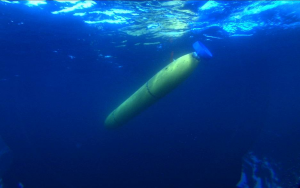Chance Constrained Planning
The following demonstration involves operating autonomous vehicles to maximize utility in an uncertainty environment, while operating within acceptable levels of risk. Autonomous under water vehicles (AUVs) are enabling scientists to explore previously uncharted portions of the ocean, by autonomously performing science missions of up to 20 hours in length, without the need for human intervention. Performing these extended missions can be a very risky endeavor. For example, due to a sudden drift in current, an AUV can collide with a seamount if it moves too close to the sea floor, while mapping a treacherous canyon. A seasoned submarine commander is skilled at identifying navigation paths that maximize scientific value, while operating within acceptable levels of risk. The model-based embedded and robotics group, has developed robust, chance-constraint planning algorithms that automatically navigate vehicles to achieve user specified science goals, while operating within risk levels specified by the users. These algorithms operate by iteratively allocating the user specified risk to different steps in the mission plan, until a risk allocation is found that maximizes science utility. A heuristic predecessor of this approach was used to navigate a vehicle to map portions of Monterrey Bay during January, 2008, and is currently being applied to the navigation of an autonomous, personal air vehicle, joint with Boeing.
